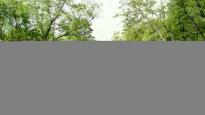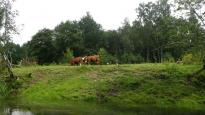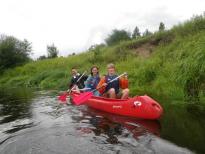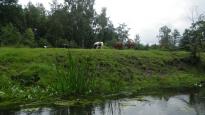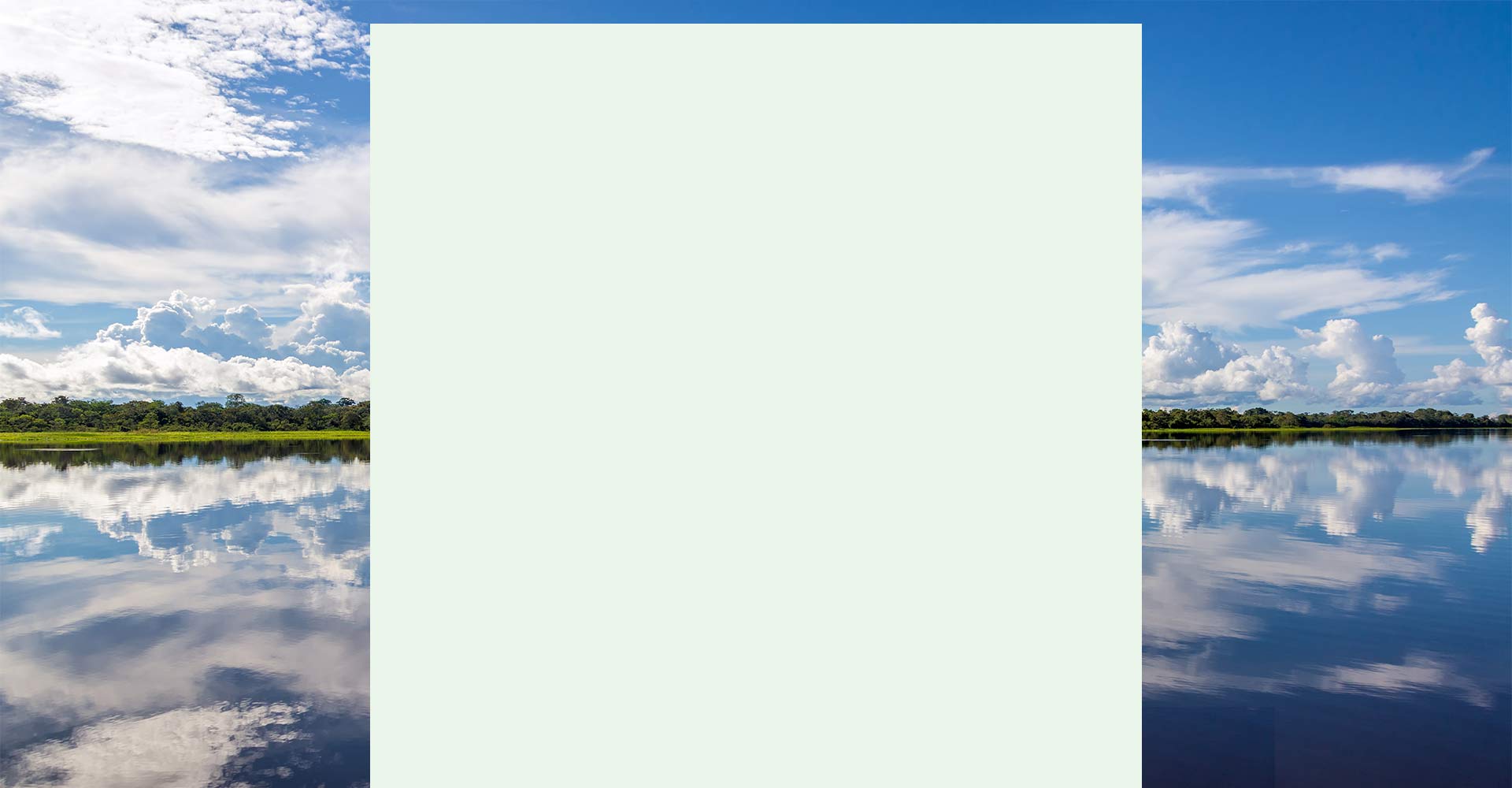
Durbe
- 48
- 2
- 20
- 0125
- 3°
Route download for mobile devices (android/iphone)
The Durbe River flows out of Durbe Lake, and after 48 km of flow it confluences with the Tebra by forming the Saka River, which flows into the sea in Pavilosta.
The Durbe is a typical river of contrasts. Fabulously beautiful places interspersed with quite usual, sometimes even monotonous landscapes, beautiful and long rapids suddenly becomes almost standing water.
Traditionally, paddling the Durbe river is commenced in Cīrava (B), but the trip can be extended from Akmene (Salmāji) bridge (A) 6 km upstream from Cīrava.
Immediately after getting into canoes in Cīrava at bridge (B) the Durbe river grips the canoes in its stream and brings to the stone pillars of the old bridge. In this place you should strive to keep on the right side of the stream. If you are passing along the old bridge and remain dry, there is no need to worry about further paddling in terms of turning over. The next 2 km of the right bank of the river are occupied by cattle. Kind looking cows look at paddlers from the downside of gnawed shrubs while slowly digesting grass.
After the pastures the river begins winding along the scrubland stands. Around 7 m high coastal cliffs appear. Here and there on the banks some large oaks are growing stubbornly. You definitely need to stop at the reinforced concrete bridge (3.6km downstream from Cīrava) and climb up on it. It is one of the few reinforced concrete bridges leading to nowhere. The road has no access to it and the feelings are surreal when standing there.
Further the river winds along houses, standing quite far away, until the paddlers find themselves in the forest. Firs, pines, oaks, maples and ash-trees, low outcrops and rapids. This is the most beautiful stretch of the Durbe river which makes your eyes happy for 6 km. After the forest stretch the river winds loop by loop over the meadows. However, there is the Upsēde bridge (C) in the middle of meadows. The first and most beautiful 13.7 km along the Durbe River are left behind.
The next 7.3 km to Mežaine bridge (D) are the endless bends, coastal meadows and quite monotonous landscapes. However, this section is a paradise for anglers. Here the Durbe river has a smooth and good drop, stream and bends form pits, and catches of chubs and perches here are guaranteed.
After Mežaine bridge (D) much more beautiful and interesting section is starting again - the river flows through the forest and somewhere on the banks the oak groves can be seen. There are high steep slopes, but 4km downstream the Mežaine bridge on the left bank of the river there are clearly visible Sēku oaks. In the next 6 km the river becomes increasingly slower, flowing through a thick forest of different trees. Behind the reinforced concrete bridge at “Unguri” house the flow again becomes more rapid, but it is not for a long time, because here the Durbe river has already completed its run and at Sakaslejas Church it confluences with the Tebra river. Exactly the confluence of rivers (E) is a good place for ending the trip, but the most powerful paddler can continue rowing along the Saka river to the sea.
In the Saka River the landscape is changing. You can feel that the sea is close. Old pile berths, distillery chimneys, meshes and motorboats. Former railway bridge, elegant palace staircase what leads almost to the water in Upesmuiža park and then you are already in Pāvilosta. Paddling along the small fishing boats and a marina must be done for the rest of the trip, and mole ends and the sea are already there. Trip along the Durbe is over.


